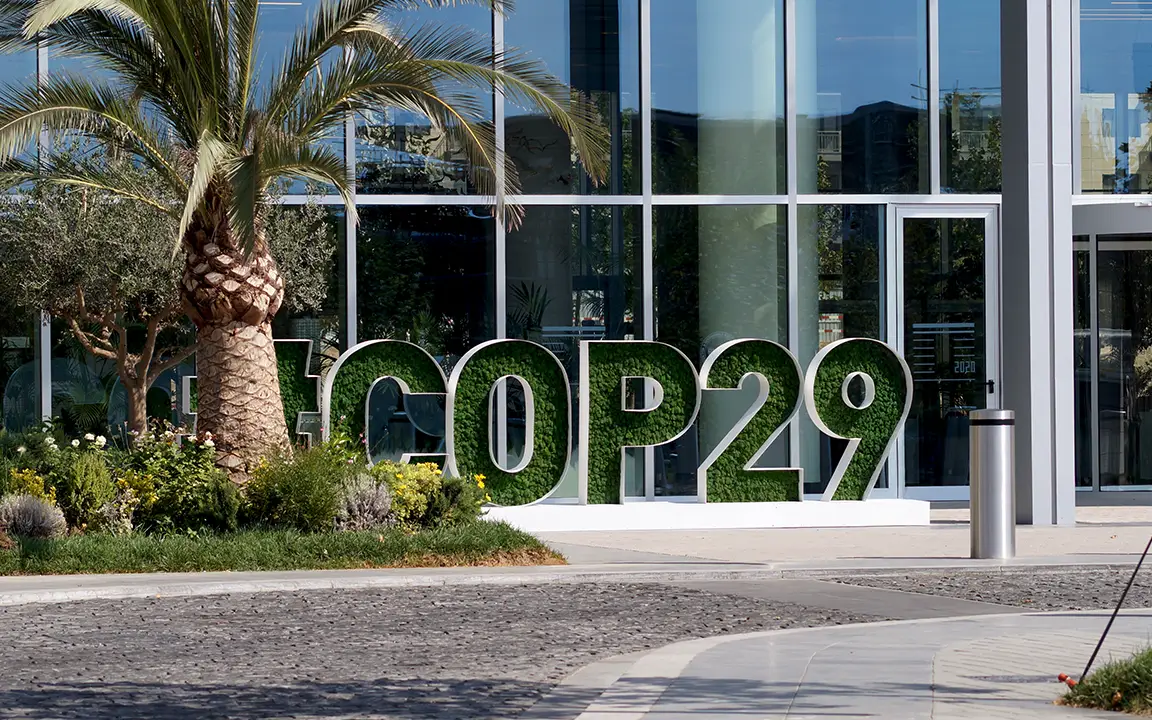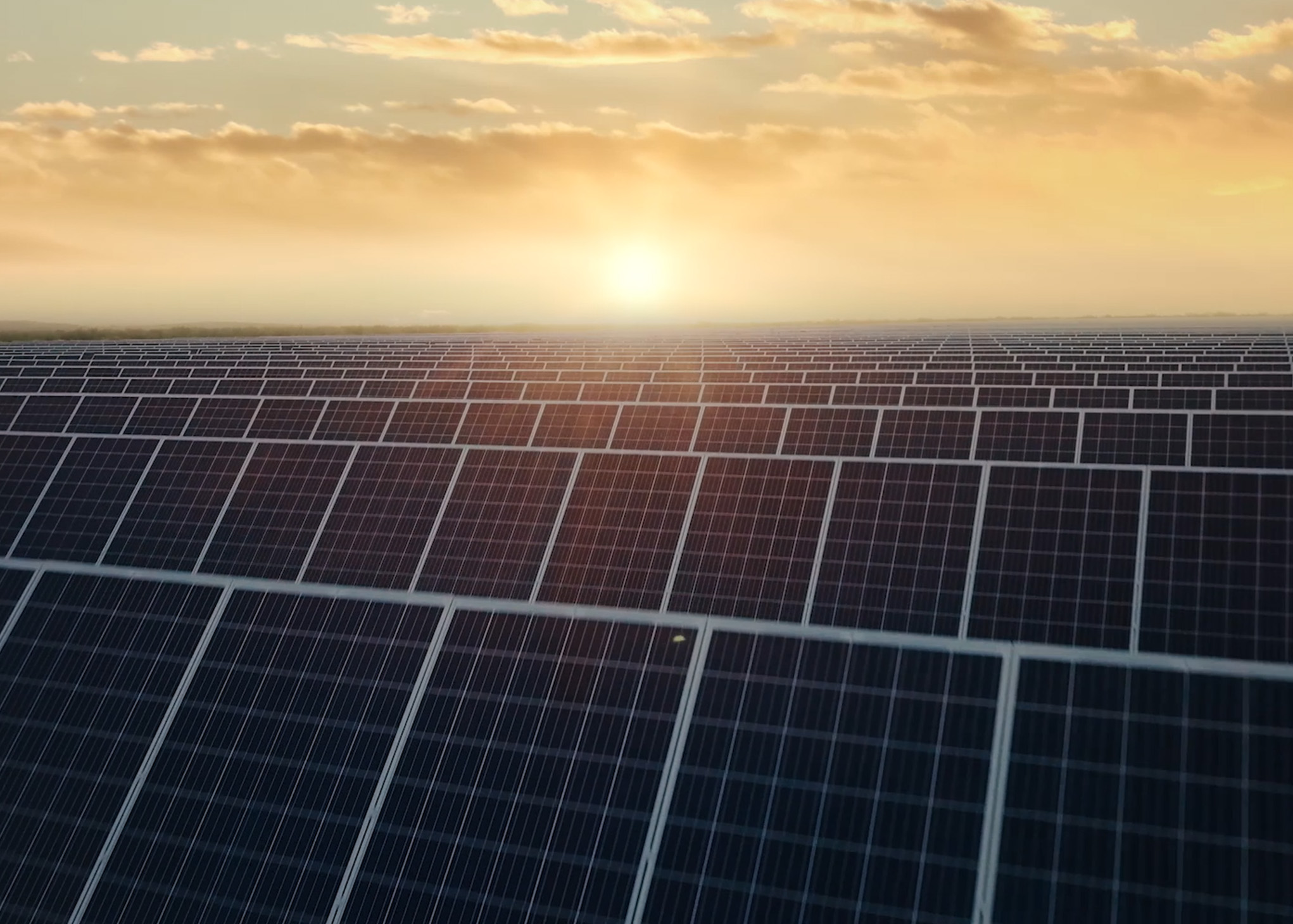What’s in a number: The power of solar in 5 figures

The sun provides our planet with a limitless source of energy — but only recently have we begun to tap into part of its potential. Solar has become the world’s fastest growing renewable energy source, offering cleaner solutions to meet with global energy demands.
While challenges remain in improving solar efficiency and scaling its adoption, Hanwha is committed to supporting the industry’s continued growth. Through the advancement of breakthrough technologies like perovskite tandem cells, as well as establishing a robust end-to-end solar supply chain, Hanwha’s efforts are working toward a stabilized solar industry, ensuring that more homes will have a secure supply of clean energy.
Numbers tell the story best — so let’s take a closer look at five key figures that highlight solar’s promise, and the innovations that are shaping it.
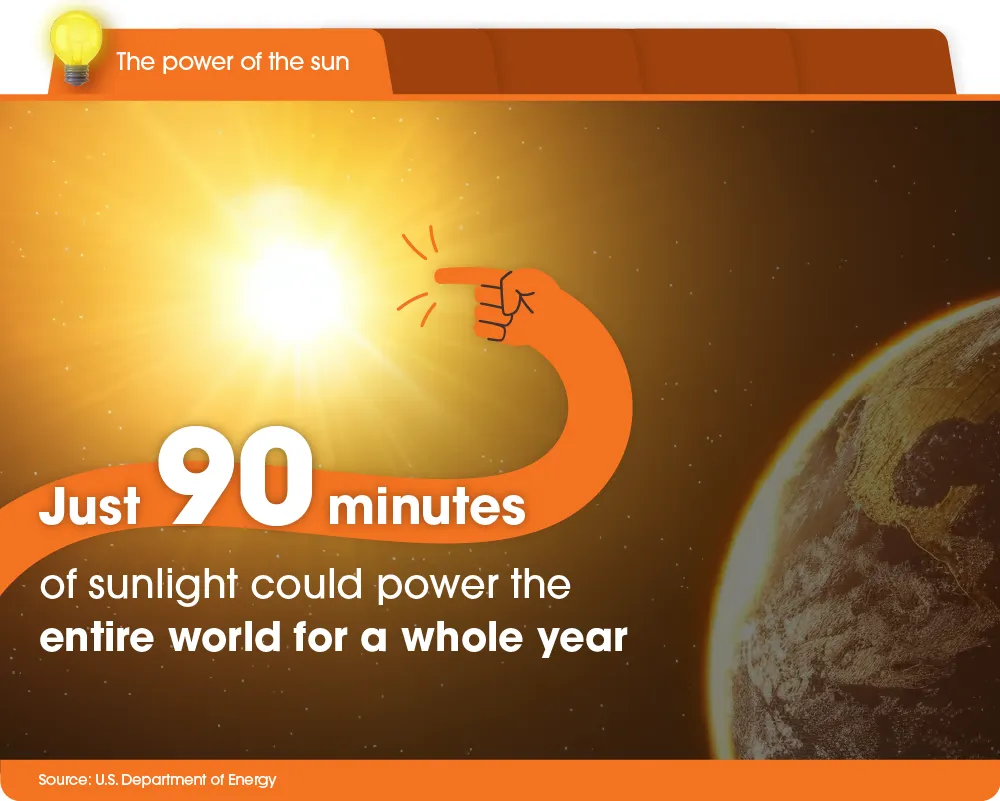
According to the U.S. Department of Energy, the sun’s light is so powerful, just 90 minutes of it could power the world for a year. Yet today, most of that energy remains untapped. The sun generates far more power than we’re currently able to convert, and conventional solar cells are nearing their efficiency limits. To truly unlock the power of solar, we need new technology that can ensure more sunlight is transformed into energy.
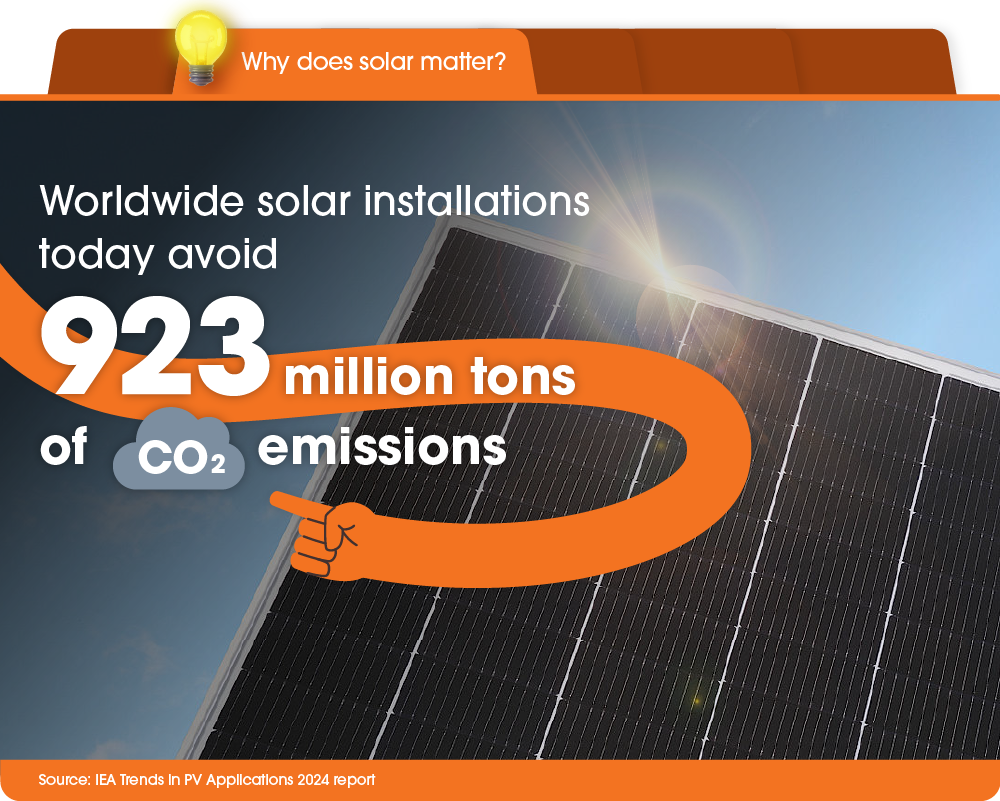
Today, solar leads the way among renewable energy sources, having experienced rapid growth in the last decade. Its benefits include an abundant energy source in the sun and a reduction in greenhouse gases like carbon dioxide (CO2). Per the most recent Trends in Photovoltaics Applications report from the IEA, global solar installations save approximately 923 million tons of CO2 equivalent emissions, equal to taking around 195 million gasoline-powered passenger cars off the road in one year. This example highlights solar’s impressive contribution to reducing emissions, in line with the world’s ongoing efforts to decarbonize.
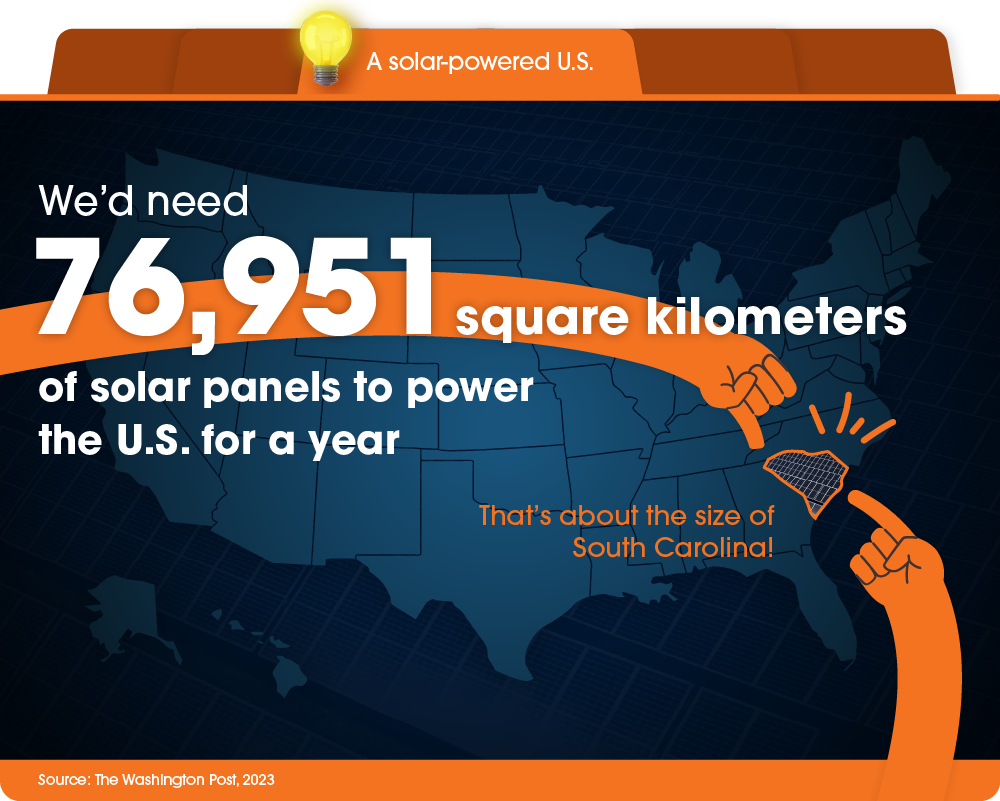
In 2023, the U.S. used approximately 4.05 trillion kilowatt hours of electricity. With that number in mind, to power the country on solar alone, we’d need to cover 76,951 square kilometers (29,711 square miles) with solar farms — that’s about the size of South Carolina. Though solar adoption has grown considerably, significant progress still needs to be made to meet the world’s net zero goals, including more solar farms. Luckily, emergent technologies will allow us to achieve higher cell efficiencies with the same amount of space and sunlight, providing the industry with another boost.
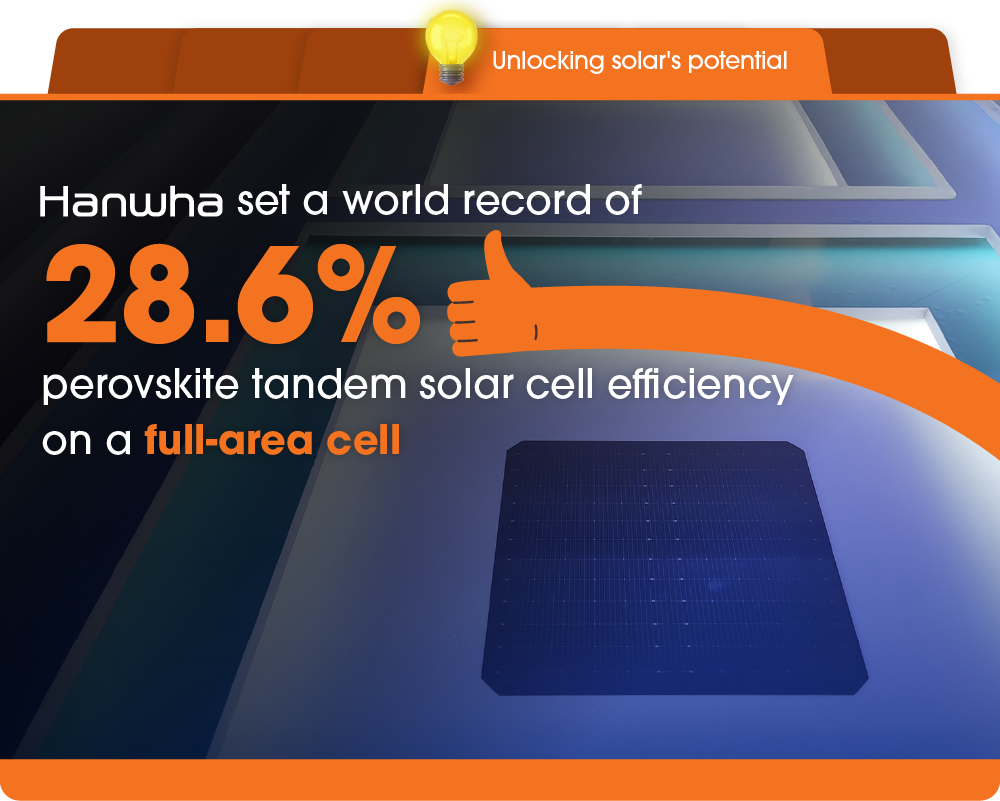
Perovskite, a game-changing mineral, has recently emerged for its potential in the solar industry. In tandem solar cells, its crystal structure is layered on top of a conventional solar cell’s silicon base. Using the same amount of sunlight, this cell architecture enables significant efficiency gains with only two-thirds of the area previously required. Hanwha Qcells recently set a new world record of 28.6% tandem solar cell efficiency on a 330.56 cm2 full-area M10-sized cell, which is readily scalable for commercialization. It’s taken decades of research to bring cell efficiency from its original 1% to this breakthrough figure, but progress doesn’t stop there. With a theoretical efficiency limit of 44%, perovskite tandem cell technology offers much to look forward to for the next era of solar energy. Recognizing its promise, Hanwha is working to commercialize these innovations at scale, bringing the industry one step closer to powerful, affordable solar technology.
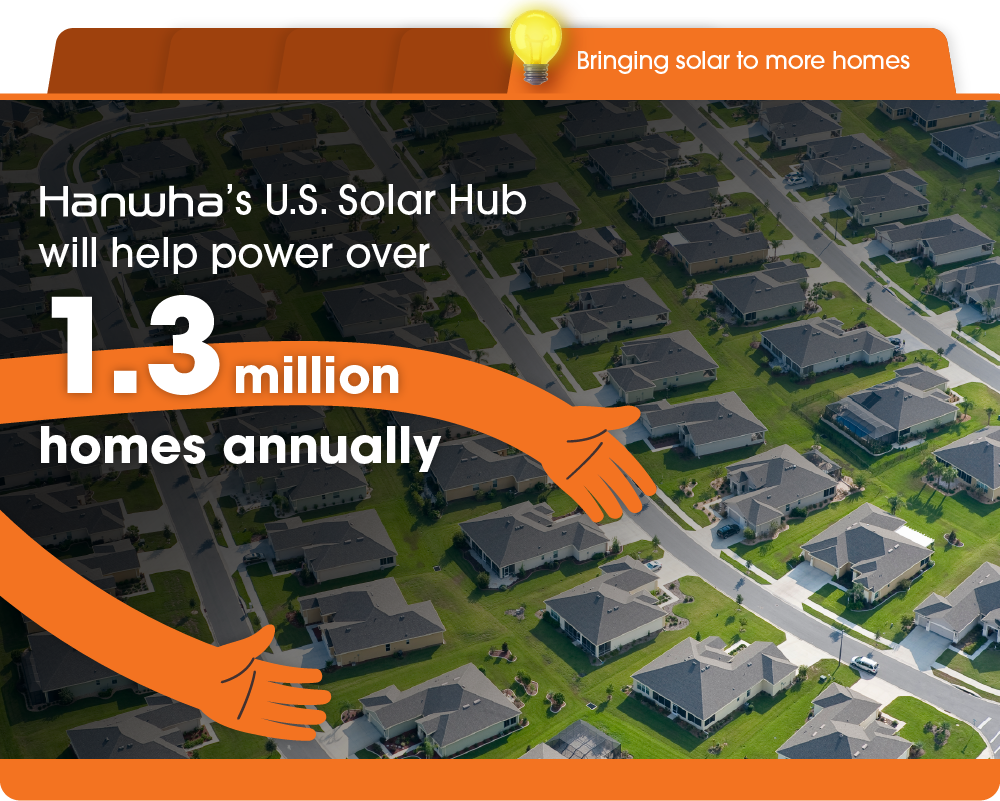
Nearing completion, Hanwha Qcells’ Solar Hub will bring the U.S. solar supply chain under one roof. Solar modules from its factories in Dalton and Cartersville, Georgia will be able to power over 1.3 million homes annually. This investment in localized solar manufacturing will not only enable cutting-edge solutions to get to the market faster, but it also demonstrates Hanwha’s ongoing commitment to ensuring that solar energy is more accessible to all.
Get the latest news about Hanwha, right in your inbox.
Fields marked with * are mandatory.
- Non-employee
- Employee


